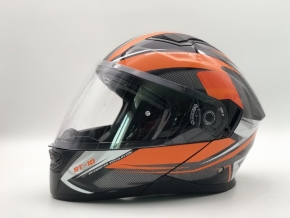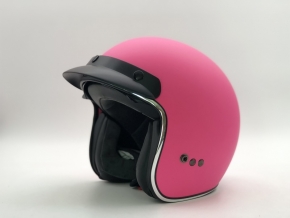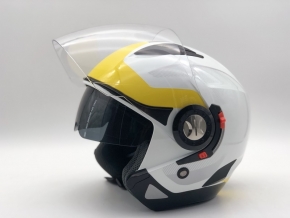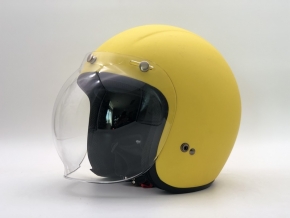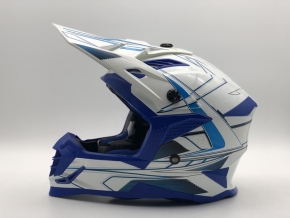As a countless helmet reader, it is necessary to talk about some life experiences to tell you how to choose a qualified motorcycle helmet and what aspects to pay attention to when choosing a helmet.
What should I choose when buying a motorcycle helmet?
So, how can we identify goods? In a word, no matter what brand helmets you see, you can tell what's good about them. When we buy helmets, we should be able to see whether they are good or not, and whether they meet the standards of the qualified line.
Helmets in jargon can be divided into Class A helmets and Class B helmets. Class A helmets are suitable for motorcycle riders with 125cc and above, that is, full helmets and three-quarters helmets. Class B helmets are suitable for motorcycle riders below 125cc, that is, what we call ladle helmets. Therefore, please note that it is unsafe to ride a motorcycle with a displacement of more than 125cc without a ladle helmet.
Motorcycle helmets generally consist of five parts, one shell, two buffer layers, three linings, four wearing devices, and five lenses. If you get a helmet, how can you judge its quality? Look at the shell → touch the buffer layer → product lining → pull the buckle → view the lens → read the sign. The last is to make a judgment, so as to identify goods.
1、 Look at the shell

The shell is the outermost layer of the helmet. The shell materials generally include PP, ABS, PC+ABS alloy, glass fiber reinforced plastic, carbon fiber, composite fiber, etc. Fiber materials have the highest technical content and are also the most expensive. The main difference between ABS and fiber helmets is that ABS is easy to break under impact, and fiber helmets are not easy to break after impact because they are composed of multiple strands of bundle like fibers.
1. Know the shell made of what material; 2. Be careful about the exterior paintwork and whether the transition edge is natural; 3. Whether there are reflective materials or eye-catching coating on the front, rear, left and right sides of the shell surface; 4. Check whether the shell vent is free of convection.
Shell material: reflects the value and manufacturing process of the helmet;
Painter: can reflect the helmet manufacturer's detail handling and conscience;
Reflective material: It is easy for passing vehicles and pedestrians to notice the driver when riding;
Vents: This is also the direction of detail processing, representing the level of workmanship. In summer, air convection can be formed in the helmet, so as not to stuffy.
2、 Touch buffer layer
The buffer layer is the inner layer of the shell, which is generally made of foam between the lining and the shell, and is the main area to absorb collision energy. Here we see: 1. Whether the foam density is uniform; 2. Whether it is displaced after extrusion.
3、 Product lining
The lining is the main area that contacts our head. If we want to buy the lining, it means that we should: 1. Smell the lining carefully to see if there is any odor; 2. Whether the material is breathable.
Odor generally indicates that there is a problem with the material, and long-term use is harmful to the body; Breathability can relieve the sweltering heat of summer cycling.
4、 Lap Pei Dai Kou
The parts of the wearing device should be permanently connected to the wearing decoration or helmet, that is, the buttons worn should not be pulled off at will.
Wearing buckles are generally divided into two types: double D-rings and sliding buckles. The safety factor of the double D ring is higher, and the helmet is generally required to be double D ring buckle on the track. It can only be opened during conscious operation. We can pull it with force to see if it can be pulled apart.
5、 Lenses
Lens is the main source of our cycling vision, which requires good light transmission and vision.
1. The front field of vision is clear, and there should be no scratches on the lens 2. There should be residual light on the left and right fields of vision 3. The lens should be able to keep stable without manual operation during the opening and closing process 4. Open it to the highest position, and the angle in the figure should be greater than 5 degrees.
6、 Read flag
Each helmet shall have a permanent mark inside, except for those made in a black heart factory: 1. Product name; 2. Name and address of the manufacturer; 3. Trademark; 4. Product type (AB type mentioned above); 5. Product model and specification; 6. Production date and batch number 7. Product production license; 8. Conformity mark
What should I choose when buying a motorcycle helmet?
From this information, we can know which factory is producing, whether it is out of warranty, whether there is a certification standard, 3C, ECE, JIS, DOT, etc. Moloto generally identifies the helmet grade from the certification standard, which is a simple and crude method. Different countries and different tripartite institutions have made different standards, with different emphasis, and some attach importance to collision testing, Some pay attention to the drop test, and the general direction will not be bad, so this article will not repeat.
Finally, there is another concern of domestic motorcycle users, that is, the weight. According to the national standard, Class A helmet should not be more than 1600g, and Class B helmet should not be more than 1000g. Sometimes we think the helmet is too heavy, often because the helmet is too heavy to hold. In fact, it should be worn on the head. It is normal within 1600g.
In conclusion, look at the shell, touch the buffer layer, product lining, wear the buckle, watch the lens, and read the logo. You can really see the goods. Don't just start from the brand, start from the comprehensive details of each helmet in hand, and help choose the most suitable helmet.



